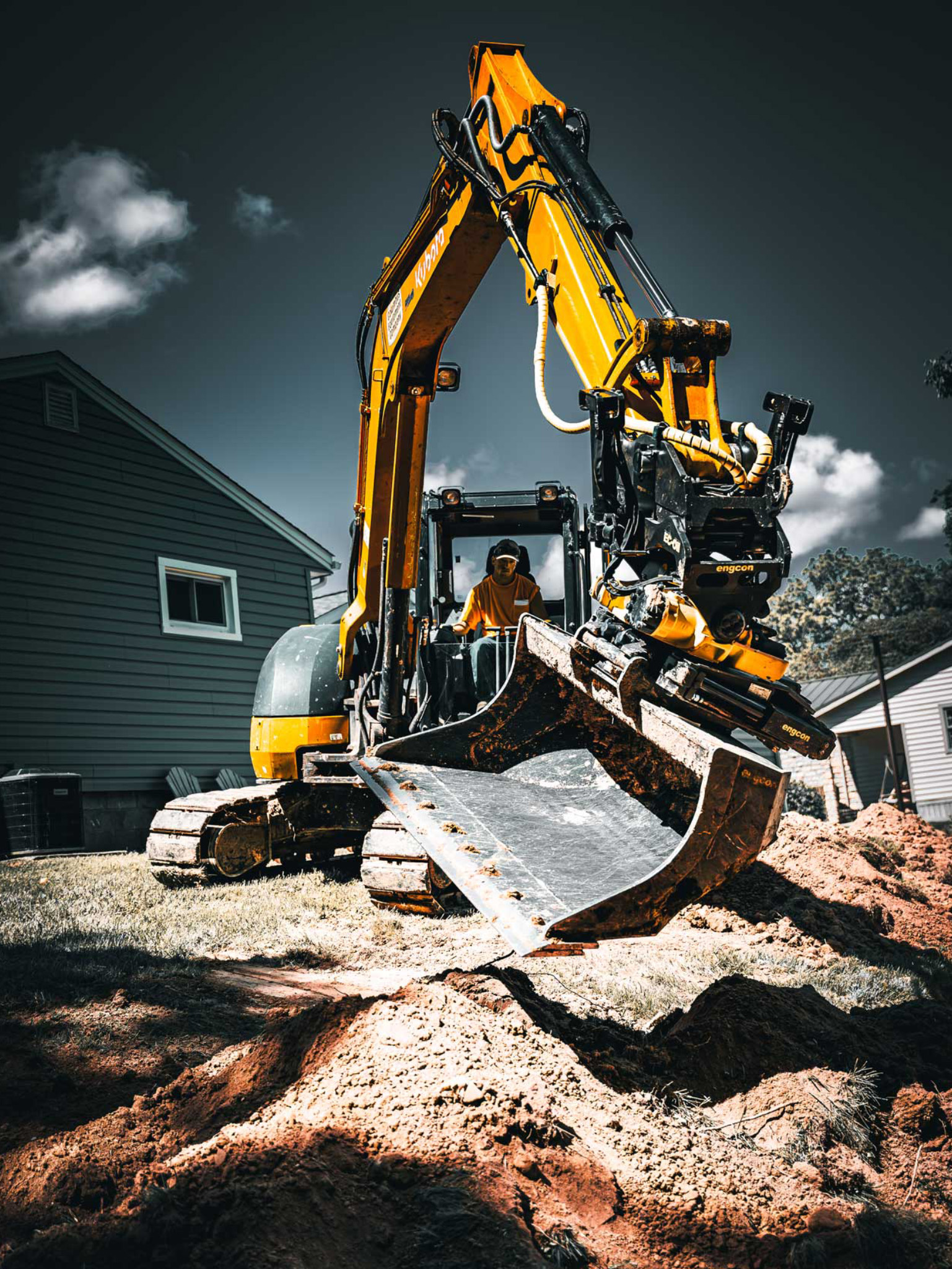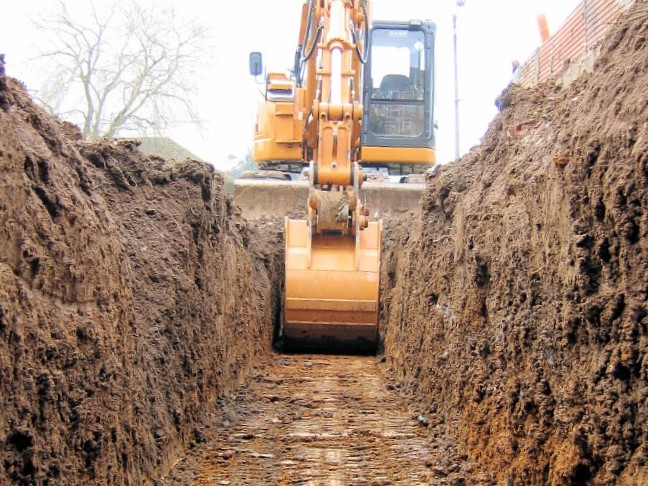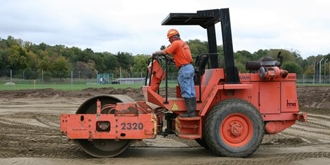Lancaster Trenching - Professional Trenching Solutions in Lancaster, Ohio
Wiki Article
Introducing the Art of Excavation: Pro Tips for Safe and Efficient Digging
In the realm of excavation, the mastery of effective and secure excavating is an art type that needs precision, adherence, and expertise to recognized practices. As dirt is turned and earth is relocated, the details of excavation expose themselves, demanding an eager understanding of devices, soil composition, safety and security procedures, and environmental factors to consider. The expertise required to navigate these elements properly can indicate the difference between an effective excavation job and a prospective disaster. By unwinding the layers of this intricate process, a globe of approaches and understandings waits for those looking for to elevate their excavation abilities to new elevations.Significance of Proper Equipment
To make sure the safety and security and effectiveness of any excavation job, utilizing the proper tools is extremely important. Excavation jobs vary in range and intricacy, ranging from little property landscape design tasks to massive building endeavors.These versatile devices come in numerous sizes to suit various task demands. Small excavators are perfect for smaller sized jobs, while bigger excavators take on a lot more comprehensive projects successfully.
In addition to excavators, other crucial tools includes dump vehicles, trenchers, and excavators. Discard vehicles are essential for removing and moving excavated materials, while trenchers are used for excavating deep and narrow trenches. Bulldozers stand out in tasks that require pushing huge quantities of soil or debris. By purchasing the suitable tools, excavation projects can be completed securely, in a timely manner, and with accuracy.
Comprehending Dirt Make-up
A thorough grasp of soil structure is essential for carrying out excavation jobs with accuracy and security. Recognizing the different kinds of dirt is vital as it straight influences excavation techniques, tools selection, and overall project performance. Soil make-up usually contains four main components: sand, silt, clay, and raw material. Each element has unique residential properties that influence how soil responds to excavation procedures.Sand fragments are the largest and provide great drain however supply little communication. Silt bits are smaller sized than sand but larger than clay, using moderate drain and cohesion. Clay bits are the tiniest and offer high cohesion yet bad drain. Organic matter, such as decaying plant product, impacts dirt fertility and security.
Before commencing excavation, performing soil tests to establish its structure and characteristics is important. This details helps in choosing the suitable equipment, applying safety measures, and creating excavation approaches customized to the specific dirt problems - lancaster excavation. By comprehending soil make-up, excavation experts can boost job outcomes while guaranteeing security and adherence to finest techniques
Safety Steps and Procedures
Recognizing dirt make-up is the keystone upon which safety procedures and procedures for excavation jobs are built, ensuring the health of employees and the success of the endeavor. There are a number of key steps that need to be executed to minimize dangers and avoid mishaps. when it comes to safety during excavation.Primarily, before any type of excavating commences, a detailed assessment of the website need to be carried out to identify any potential threats such as underground energies, unstable dirt problems, or nearby frameworks that can pose a risk. It is important to have a proficient individual supervise the excavation process to make sure that all safety and security procedures are complied with strictly.
Furthermore, all workers involved in the excavation has to be properly educated in safe excavating methods and the proper operation of this hyperlink devices. By sticking to these security steps and protocols, excavation jobs can be finished effectively and company website without case.
Reliable Excavation Planning
When starting an excavation project, thorough planning is important to make sure performance, security, and effective end results. Effective excavation preparation involves a number of vital actions that are critical for the smooth implementation of the job. The first action is to carry out a complete website assessment to determine any type of potential hazards, such as below ground energies or unsteady soil problems. This information is important for creating a comprehensive excavation strategy that includes safety procedures and take the chance of mitigation approaches.When the website assessment is complete, the following action is to create a clear timeline and schedule for the excavation tasks. This consists of determining the series of jobs, equipment needs, and workforce appropriation. Appropriate organizing helps avoid hold-ups and ensures that the project remains on track.

Additionally, interaction among all employee is critical throughout the planning stage. Clear regulations, routine updates, and reliable coordination are crucial for an effective excavation project. By spending time and effort in meticulous preparation, excavation groups can dramatically enhance efficiency, reduce risks, and achieve effective outcomes.

Managing Environmental Considerations
With increasing focus on environmental sustainability in construction methods, handling ecological factors to consider has ended up being an important facet of excavation projects. Excavation tasks have the potential to affect the surrounding atmosphere with soil erosion, debris drainage, habitat disruption, and contamination of water resources. To reduce you can find out more these threats, it is important to execute best techniques that prioritize environmental management.
Furthermore, correct waste administration is essential to avoid soil and water contamination. Executing treatments for the disposal of harmful materials, recycling of waste materials, and minimizing using hazardous chemicals can dramatically reduce the ecological effect of excavation tasks. By incorporating these techniques into excavation preparation and execution, building firms can ensure that their jobs are not just safe and productive yet additionally environmentally responsible.
Verdict
In final thought, understanding the art of excavation calls for a thorough understanding of appropriate equipment, soil structure, safety and security actions, and reliable planning. By adhering to these standards and taking into consideration environmental variables, excavations can be performed securely and successfully. It is vital to focus on security and productivity in every excavating job to make sure successful results.As dirt is turned and earth is moved, the ins and outs of excavation reveal themselves, demanding an eager understanding of equipment, dirt make-up, safety methods, and ecological factors to consider.To guarantee the safety and security and effectiveness of any type of excavation task, using the suitable equipment is vital.A thorough grasp of dirt composition is essential for implementing excavation projects with accuracy and security. Comprehending the different types of soil is crucial as it directly impacts excavation methods, tools option, and overall job performance. By comprehending dirt composition, excavation specialists can improve project results while making sure safety and security and adherence to ideal techniques.
Report this wiki page